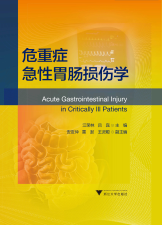
并列正书名: Acute Gastrointestinal Injury in Critically Ⅲ Patients
主要责任者: 江荣林,吕宾
责任方式: 主编
出版者: 浙江大学出版社
出版地: 杭州
字数: 455 千字
页码: 1-312
开本: 16
中图分类号: R573
语种:中
定价:85.00
出版时间:2017-03
丛书多卷书否:否
书目简介:本册工具书共收录209条词条。
被引频次:5
| 词条 | 危重症急性胃肠损伤学 |
| 类别 | 中文百科知识 |
| 释义 |  并列正书名: Acute Gastrointestinal Injury in Critically Ⅲ Patients 主要责任者: 江荣林,吕宾 责任方式: 主编 出版者: 浙江大学出版社 出版地: 杭州 字数: 455 千字 页码: 1-312 开本: 16 中图分类号: R573 语种:中 定价:85.00 出版时间:2017-03 丛书多卷书否:否 书目简介:本册工具书共收录209条词条。 被引频次:5 |
| 随便看 |
开放百科全书收录579518条英语、德语、日语等多语种百科知识,基本涵盖了大多数领域的百科知识,是一部内容自由、开放的电子版国际百科全书。